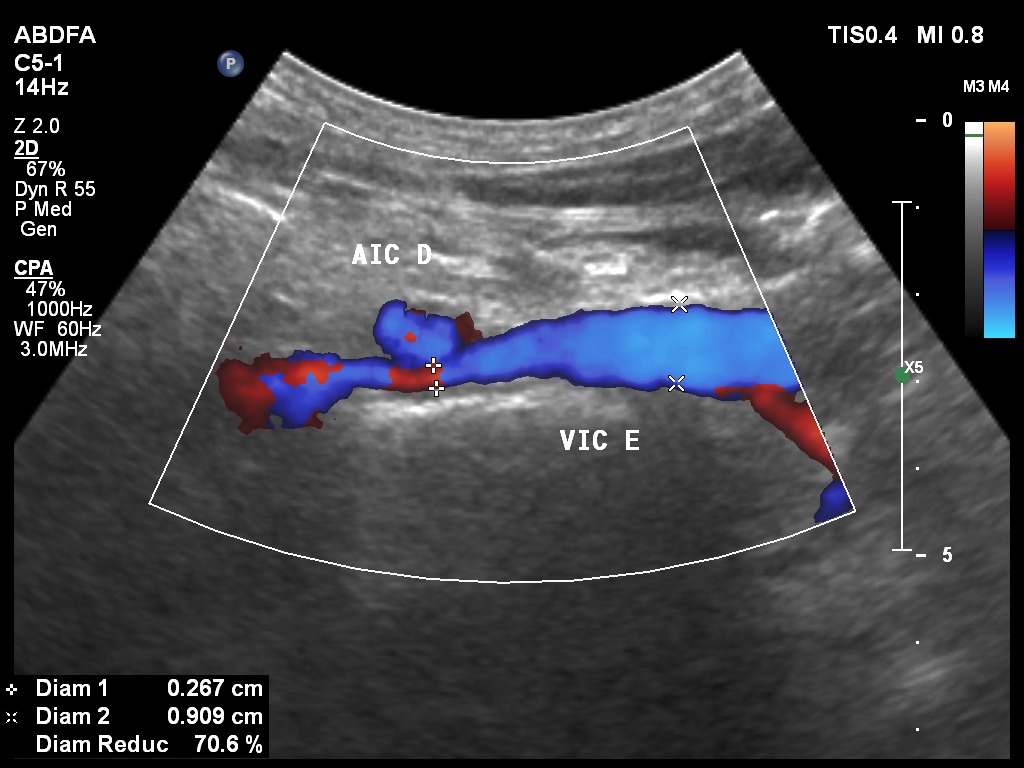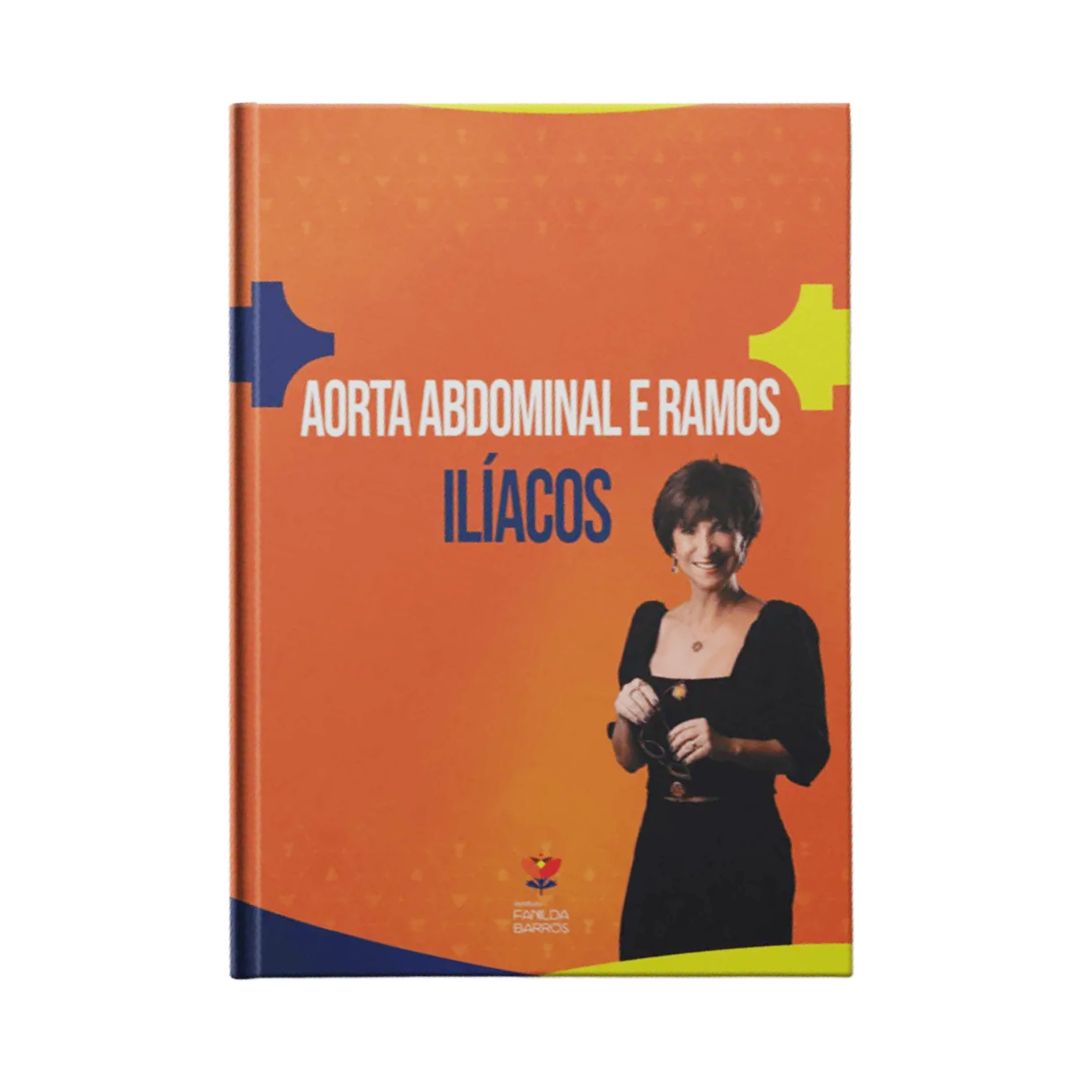Venous extrinsic compression has been evaluated during noninvasive, ultrasonographic (US) examination for deep venous thrombosis (DVT), chronic venous insufficiency, renal dysfunction,
and pelvic or lower extremity varicose veins.1-4
Compression of the left common iliac vein by the right common iliac artery is commonly referred to as May-Thurner or Cockett syndrome based on classical references.5-8 Pelvic vein thrombosis, lower extremity signs, and symptoms of chronic venous insufficiency and anatomic variations have been highlighted.
5-8 One anatomic variation is compression by the left common iliac vein extending distally. Initially, veins distal to the extrinsic compression dilate causing leg pain and swelling.
Signs are mostly unilateral affecting the left lower extremity; a relative increase in thigh or calf circumference may be noticeable.
A significant stenosis alters venous flow from phasic with respiration to continuous. Iliofemoral or extensive DVT of lower extremity and/or pelvic veins is a serious consequence.
Severe skin changes and venous ulcers may develop as the stages of chronic venous insufficiency advance.9 Increased collateralization has been noted around the obstructed iliac veins.
Anticoagulation and venous/arterial surgical techniques have produced debatable results.8,10,11 Staged pharmacological thrombolysis, mechanical thrombectomy, retrievable vena cava
filter, and angioplasty/stenting of the left iliac vein have been described as treatment for patients with extensive DVT.7,9,12
Simple balloon dilatation and stenting may be enough to treat extrinsic compression without DVT.13,14 US has been used to diagnose DVT and extrinsic compression,1-3,15,16 to guide medical procedures,17-25 and to follow the patients post invasive or minimally invasive treatment.
Attention to (1) common femoral venous flow absence of phasicity with respiration and (2) collateral venous flow has been emphasized as a means to suspect proximal stenosis or obstruction.26 US diagnosis and follow-up post thrombolysis and stenting have been demonstrated.27 Extensive, bilateral DVT has been related to extrinsic tumoral compression of the distal inferior vena cava and proximal common iliac veins.28 Venous claudication of the left lower extremity has been associated with extrinsic compression of the left iliac vein; symptoms
have been relieved by stenting.29 Short- and long-term post procedural US are recommended
to document venous patency and extremity viability and to consider complementary treatment. This report focused primarily on 1-month to 5-year patency rates of iliac veins treated.









